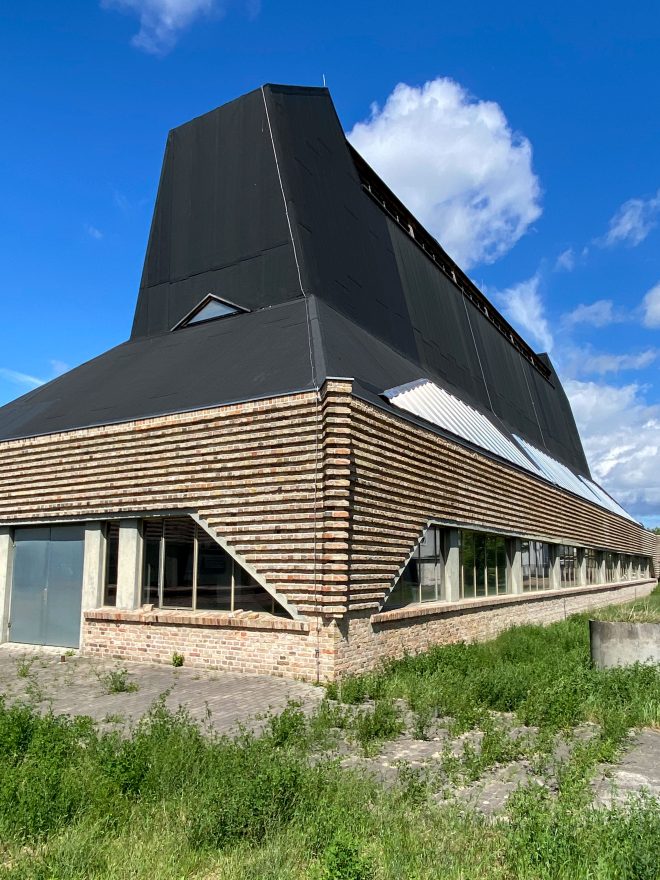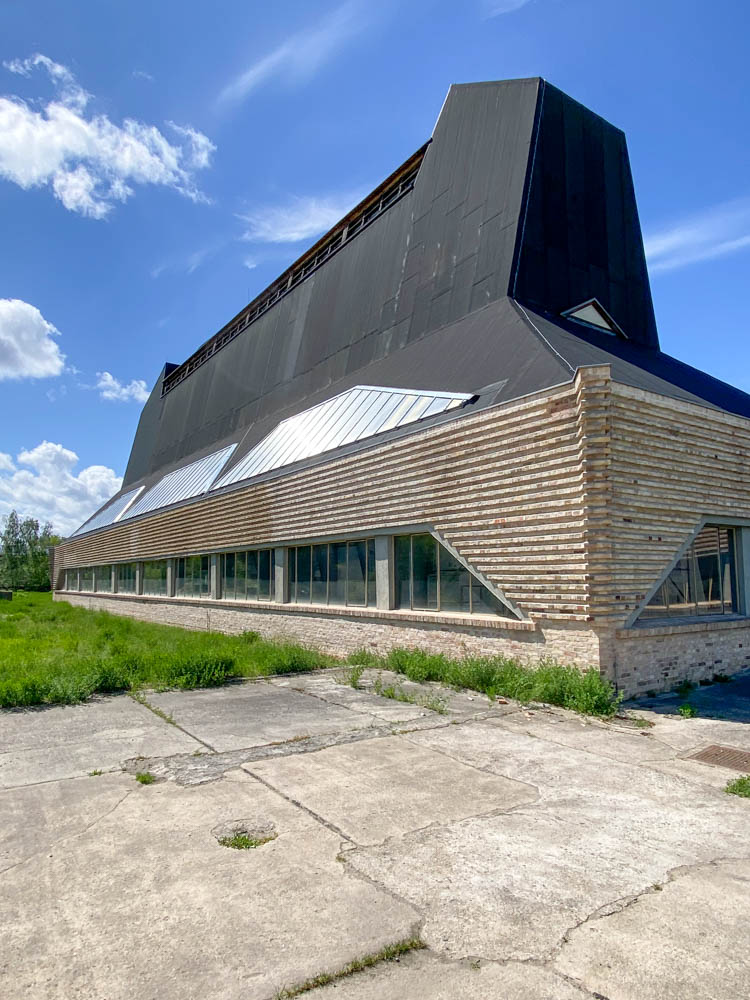
Hat Factory, 1921-1923. Architect: Erich Mendelsohn. Photo: Daniela Christmann
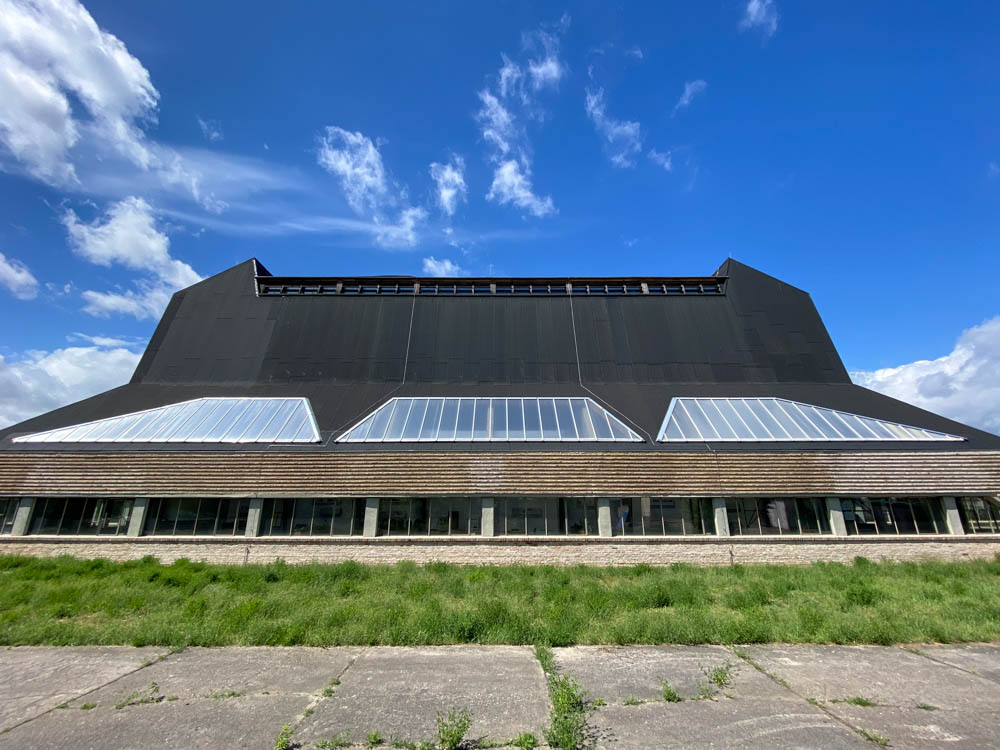
Hat Factory, 1921-1923. Architect: Erich Mendelsohn. Photo: Daniela Christmann
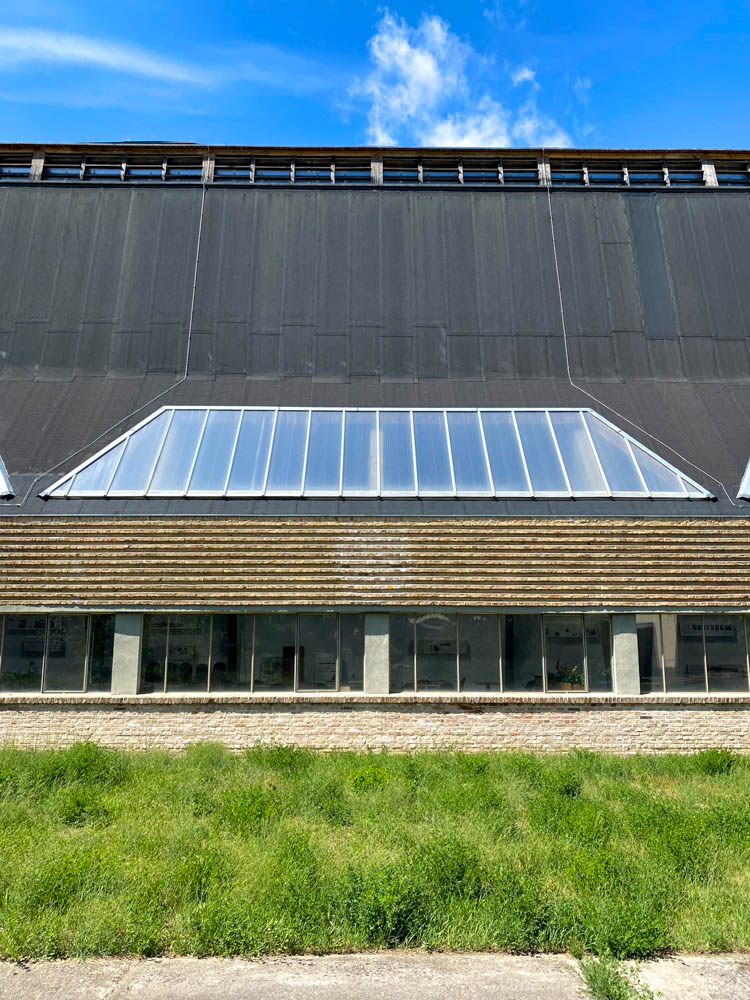
Hat Factory, 1921-1923. Architect: Erich Mendelsohn. Photo: Daniela Christmann
1921 – 1923
Architect: Erich Mendelsohn
Industriestrasse 2, Luckenwalde, Germany
The hat factory in Luckenwalde is one of the most important examples of modernist industrial construction in the early 20th century. It was built between 1921 and 1923 according to plans by architect Erich Mendelsohn.
Hat Manufacturing in Luckenwalde
In the mid-19th century, the town of Luckenwalde in Brandenburg was the second most important location for German hat manufacturing, along with the city of Guben.
Textile manufacturing and processing had a long tradition in Luckenwalde. Until the end of the 18th century, production was in the hands of master craftsmen. In the course of industrialization since the beginning of the 19th century, more and more textile factories were founded in Luckenwalde.
In 1889, the hat workers united in the Luckenwalde Hat Workers’ Association, which had around 3,000 members in 1929.
Steinberg & Co.
Since 1844, the Steinberg company in Luckenwalde had been producing cloth, which it processed in its own hat factory since 1870. Thanks to a successful business policy, the company expanded rapidly. At the beginning of the 20th century, it was the strongest competitor of the Herrmann hat factory, also located in Luckenwalde.
In 1919, Gustav Herrmann, who had meanwhile taken over the management of the company from his uncle Salomon, met the young architect Erich Mendelsohn in Berlin.
Erich Mendelsohn
Mendelsohn gave a series of eight lectures in Molly Philippson’s Berlin salon around the turn of the year 1918/1919.
In these, he promoted a new architecture that would accommodate the new uses, social realities, and technical possibilities of iron and reinforced concrete.
Herrmann engaged Mendelsohn as late as 1919 for no less than three building projects in Luckenwalde: a garden pavilion, a workers’ housing estate for the Luckenwalder Bauverein, which Hermann had co-founded, and the remodeling of his company.
Subsequently, a long-standing friendship developed between the Mendelsohn and Herrmann families.
On January 1, 1921, the Steinberg and Herrmann companies merged.
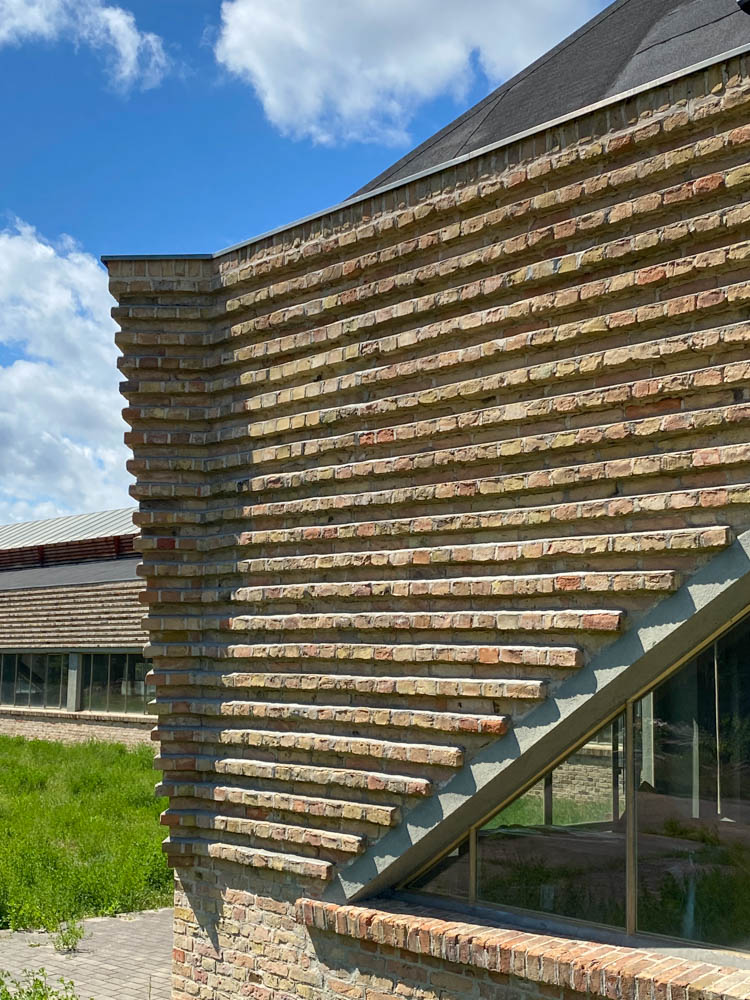
Hat Factory, 1921-1923. Architect: Erich Mendelsohn. Photo: Daniela Christmann
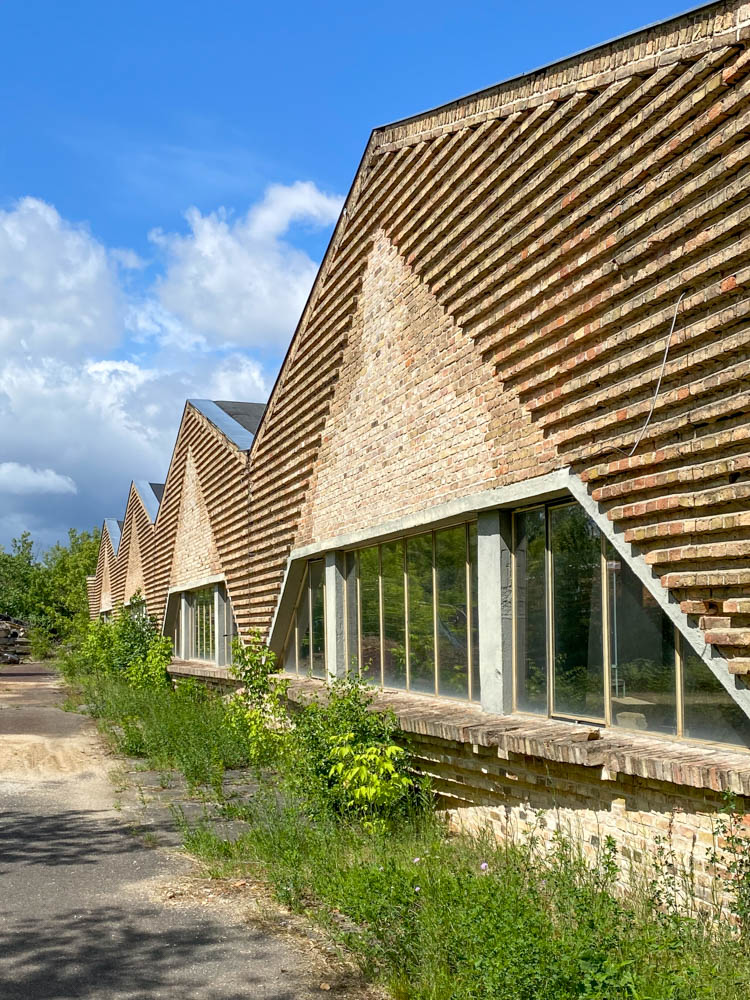
Hat Factory, 1921-1923. Architect: Erich Mendelsohn. Photo: Daniela Christmann
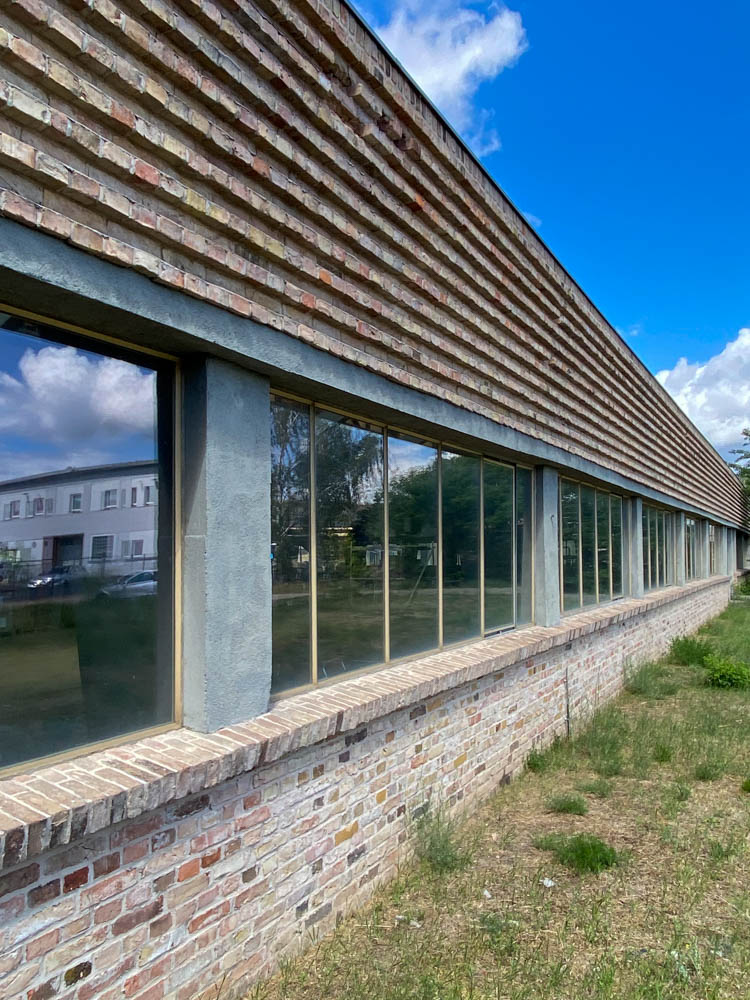
Hat Factory, 1921-1923. Architect: Erich Mendelsohn. Photo: Daniela Christmann
New Factory Building
Mendelsohn began designing a new building for the Friedrich Steinberg Herrmann & Co. company in November 1921 in the recently designated industrial area in the southwest of Luckenwalde.
Mendelsohn developed his design in a series of sketches, which he drew on the beach at the Baltic Sea and in the studio in ink or colored chalk.
Richard Neutra
These colored sketches were reported by Richard Neutra, a young architect working at the Luckenwalde building office at the time:
“My colleagues in the building office showed me one day some daring color sketches for a hat factory. These drawings had been submitted by a man named Erich Mendelsohn.
I thought they looked like expressionist art, and after all, it was strange to have the courage to submit them to a municipal building inspector in Luckenwalde.”
Neutra then joined the office of Erich Mendelsohn. The latter urgently needed assistance, as he had lost his left eye to cancer in 1921.
Despite this health condition, he submitted the building application for the planned hat factory in November 1921.
Design
Based on the production process, he designed a mirror-symmetrical overall layout with the buildings arranged on the central axis.
Behind the gatehouse directly on the industrial road lay the dye works, the production halls, and the boiler and machine house.
An industrial railroad track ran along the site, through which raw materials and fuel could be delivered and the products were dispatched.
Construction work on the factory halls and the dye house began in March 1922.
In July 1923, fabrication began at the new site.
In his book ‘Erich Mendelsohn – Das Gesamtschaffen eines Architekten’, published in 1930, the factory complex is described as follows:
‘New building of the hat factory Friedrich Steinberg, Herrmann & Co. Luckenwalde. Built in 1921/23.
Elongated industrial site. Double-sided production line for both hair and wool hats. As a result, central location of the wet operations, the dye works and the power station.
Construction phases: 1. raw fabrication: halls and dye house, expandable to both sides, likewise. 2. power station: boiler and machine house at the railroad track for two steep tube boilers and two turbo generators. 3. entrance as gate houses. 4. final building part of the finished fabrication, not yet executed.
Planned as an elevated wing behind the entrance. This will make the dye works the dominant feature of the inner courtyard. Material: reinforced concrete trusses, walls in masonry, ruberoid roofs.’
Dye Works
The basic dimensions of the dye works building with its striking hat roof are 14 x 50 m, with a maximum height of 17 m at the ventilation extension.
A brick-faced structure opens on the first floor through continuous bands of windows running out at an acute angle.
Pointed windows characterize the roof surfaces.
Production Halls
Four light-flooded production halls with a floor area of 150 x 56 m were built directly adjacent to the dyeing plant. Each of the four 14 m wide halls is spanned by 31 concrete frame girders with 5 m center-to-center spacing.
Their downward tapering piers were structurally connected in such a way that a continuous frame girder was created.
Illumination of the halls is provided by glass gable roofs on three-hinged wooden arch girders.
Roof surfaces below the ventilation louvers were covered with ruberoid, a roofing felt.
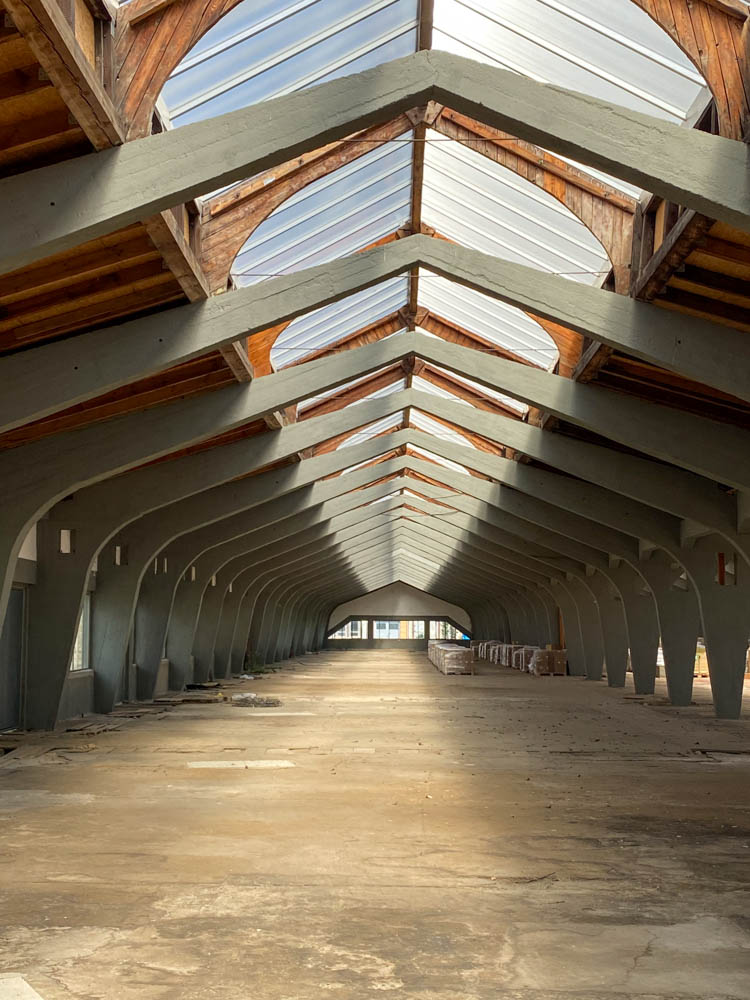
Hat Factory, 1921-1923. Architect: Erich Mendelsohn. Photo: Daniela Christmann
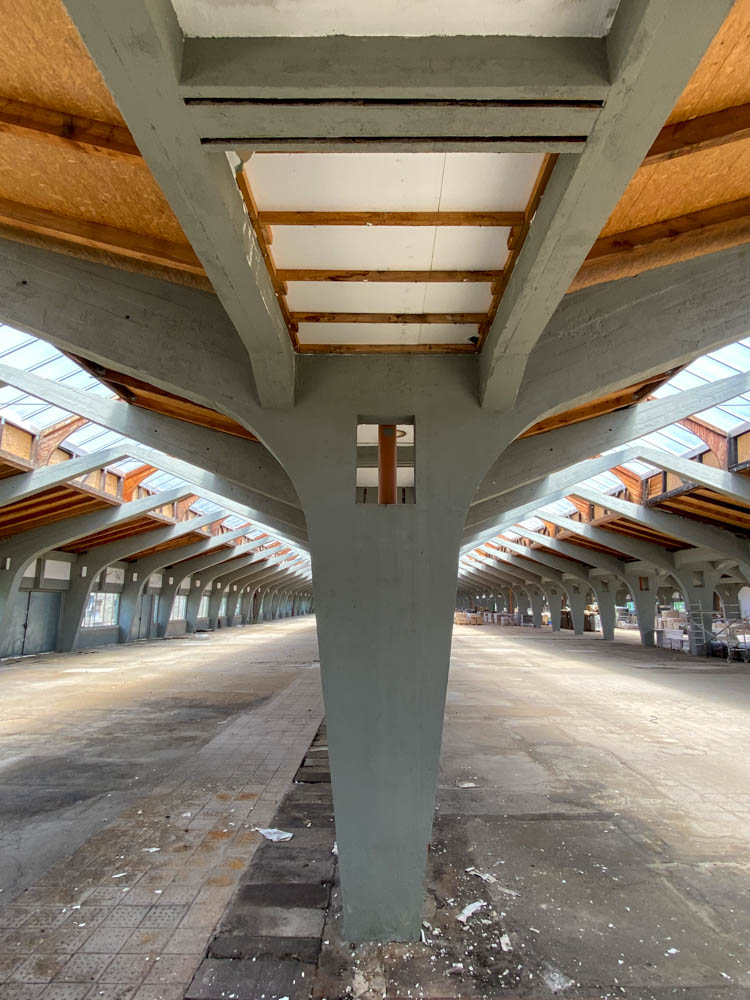
Hat Factory, 1921-1923. Architect: Erich Mendelsohn. Photo: Daniela Christmann
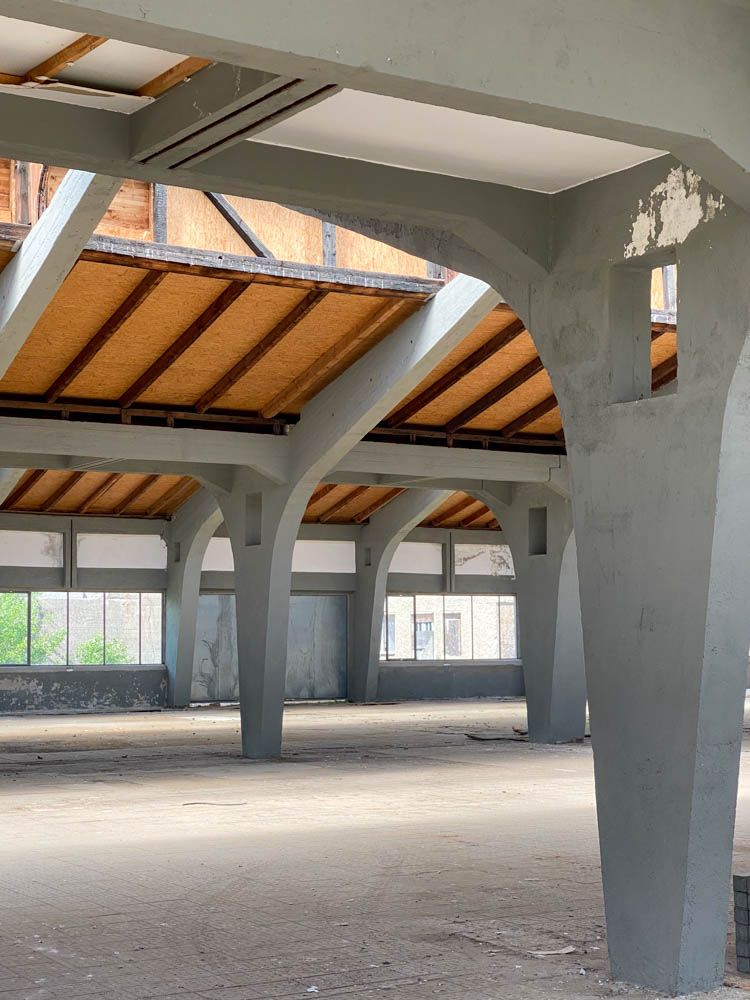
Hat Factory, 1921-1923. Architect: Erich Mendelsohn. Photo: Daniela Christmann

Hat Factory, 1921-1923. Architect: Erich Mendelsohn. Photo: Daniela Christmann
Prefabrication
The final part of the prefabrication mentioned by Erich Mendelsohn in his book contribution was never executed.
Until the end of the company in 1935, the final production of the hats remained in the two Luckenwalde headquarters of Steinberg in Treuenbrietzener Straße and Herrmann in Potsdamer Straße.
The years after 1933
Gustav Herrmann passed away in 1932. After the forced emigration of some members of the Herrmann family in 1933, Friedrich Steinberg initially continued to run the business.
In 1934, he was forced to sell the company to Norddeutsche Maschinenbau AG (Nordeuma). Nordeuma began producing aircraft guns and anti-aircraft weapons in Luckenwalde.
By 1936, the roofing of the gatehouses had been replaced by a concrete slab and another production building was built adjacent to it to the east.
To the east and west of the former dye works, extensions were built by Paul Renner in 1941.
The hat roof of the dye works and the ventilation system were demolished with the justification of protecting the factory from possible bombing raids.
Monument Protection and Restoration
As early as 1976, Mendelsohn’s hat factory was included in the list of monuments of the Potsdam district because of its architectural-historical significance, and in 1991 it was included in the list of monuments of the state of Brandenburg.
A support group founded in 1999 made it possible to preserve and partially renovate the industrial plant.
With the help of URBAN funding, the dye works were rebuilt in 2006 and 2011 and the characteristic roof hood was reconstructed.
Until today it was not possible to realize a permanent use of the buildings, they are still vacant.

